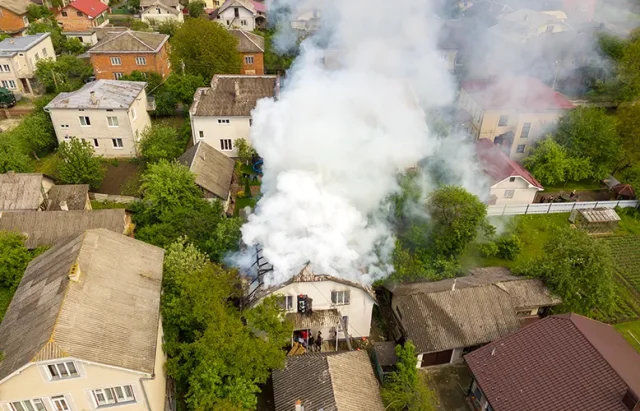According to a new survey by belairdirect, Canadians are doing a lot to protect their homes, including installing smoke detectors (92 per cent) and cleaning their dryer lint traps (86 per cent), but half say we could be doing more to mitigate fire risks according to a new survey by belairdirect. In fact, many (41 per cent) admit there are likely fire risks in our homes that they are not paying enough attention to.
As we head into the colder months, belairdirect wants to help fill this knowledge gap with helpful tips for greater fire safety so Canadians can protect their homes and loved ones.
Here are some fire safety gaps revealed in the belairdirect survey:
- Only 58 per cent of Canadians have a fire extinguisher near the kitchen yet almost one-third of fires1 are related to cooking or open flames.
- Just over half of survey participants (52 per cent) admit to leaving small appliances on when not home, 40 per cent have multiple power bars or extension cords in some rooms and only 35 per cent checked our homes for frayed wires yet one in 10 fires are associated with mechanical or electrical failures or malfunctions2.
- Only 19 per cent say they know how to put out or suppress a lithium-ion battery fire, yet many (59 per cent) have lithium-ion powered devices in our homes including phones, laptops, e-bikes and power tools. Just over half of Canadians (53 per cent) haven’t practiced their fire escape plan in the last year and only 28 per cent have spoken to others in their homes about the plan, even though 61 per cent have a fire escape plan.
Eleven percent of Canadians have a close friend or family member who has experienced a substantial house fire and 10 per cent have experienced a minor fire. At belairdirect, any fire is one fire too many.
“At belairdirect, we understand that there is a need to provide this fire safety and prevention education to Canadians,” says Emilie Dutil-Bruneau, Vice President, Sales and Operations at belairdirect. “We work with each of our customers to ensure they understand their insurance coverage and help them find solutions that best fit their needs. If our customers find themselves in a situation where they need help, we are there for them every step of the way to get them back on track as soon as possible.”
With Fire Prevention Week underway (October 6 to 12), belairdirect has prepared a list of solutions to help Canadians protect their home from fires:
- Cooking: Never leave the kitchen when cooking, and never leave the house when the oven is on. Keep your oven clean and have a pot lid or cookie sheet nearby to smother a pan fire.
- Smoking: Do not smoke in your home, extinguish cigarettes in water before throwing them out, and store lighters and matches out of sight and reach of children.
- Candles: Never leave candles unattended. Extinguish candles once they’re two inches from the base, and keep candle wicks trimmed to 6.5 mm.
- Heating appliances: Ensure any space-heating devices are certified by a recognized testing agency. Never use them to dry clothes, keep them at least one metre away from flammable objects and don’t leave them on when you leave the room.
- Chimney: If you have a wood burning stove or fireplace, have it inspected and swept by a certified Wood Energy Technology Transfer (WETT) chimney certified technician each year and complete any necessary repairs.
- Power strips: Avoid overloading power strips and power cords. Don’t cover them with fabric or rugs or leave them in areas where wires can be damaged.
- Lithium batteries: Unplug your lithium battery devices (e.g. phones, e-bikes, power tools) when are you not using them. Store devices and lithium batteries away from heat sources and avoid dropping them. Stop using the battery if you notice any odour, noise, or leaking, change in colour or shape.3 Eleven per cent of us believe lithium-ion battery fires can be put out with water. The key is to cool the battery down and a specialized extinguishing agent may be needed.








































